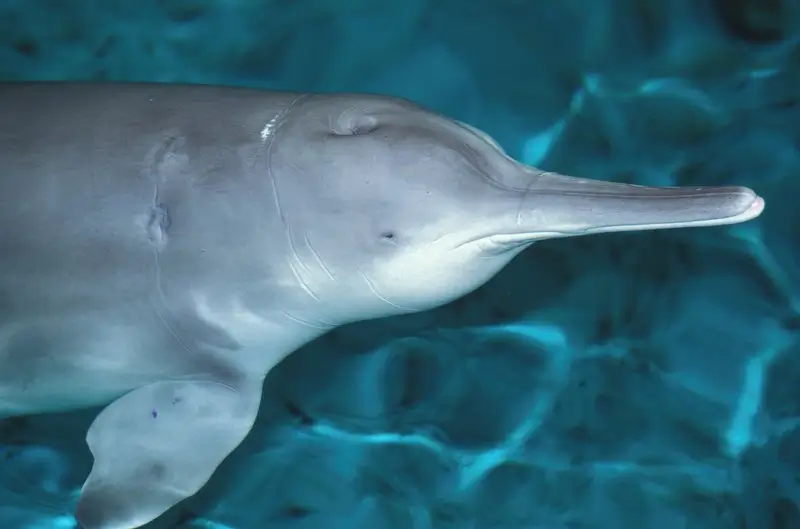Baiji
Lipotes vexillifer
Cetacea - Lipotidae - Lipotes
The Baiji, a freshwater dolphin species, was native to the middle and lower reaches of the Yangtze River in China. It was the sole modern species of the family Lipotidae. The Baiji is considered an ancient relict species in its own family, diverging independently from a common ancestor with other freshwater dolphins (such as the Ganges River Dolphin, Amazon River Dolphin, and La Plata Dolphin) at least 15 million years ago. This divergence makes the Baiji part of a paraphyletic group with no close relation to any modern cetaceans. 1
The Baiji exhibited specialized physical adaptations for freshwater life, similar to other freshwater dolphins: it relied heavily on echolocation (with reduced eyesight), had a long, narrow beak, and a thin layer of blubber. Compared to other freshwater dolphins, the Baiji’s body size was similar to that of the Ganges River Dolphin (smaller than the Amazon River Dolphin, larger than the La Plata Dolphin), with a length of about 2 to 2.5 meters, and females being slightly larger than males. It had a more streamlined body shape, a beak with a slight upward angle, and a light bluish-gray color on the back with a pure white belly. Like other freshwater dolphins, the Baiji had a triangular dorsal fin, which appeared light-colored in sunlight when breaking the water’s surface, giving it the nickname “white flag.”
The Baiji primarily fed on freshwater fish from the Yangtze River. Similar to other cetaceans, they were social animals, living in small pods typically consisting of a few individuals. Their reproductive cycle was similar to other cetaceans, lasting over 10 months to a year, with a low pregnancy rate of about 30%, which is low even among cetaceans known for their difficult reproduction. Thus, the Baiji was a noble yet fragile apex predator.
The Baiji’s population declined dramatically in the second half of the 20th century due to habitat fragmentation caused by the development of the Yangtze River basin, industrial pollution, and accidental deaths from human activities on the river. These factors led the species towards extinction.
The last known living Baiji, “Qiqi,” (淇淇) was captured in the wild and kept in artificial care. Qiqi died on July 14, 2002, at the Institute of Hydrobiology of the Chinese Academy of Sciences in Wuhan, aged around 23-25 years. In the late 20th century, field observations reported only single-digit individuals. In 2004, a stranded and deceased Baiji was found in the Nanjing section of the Yangtze River. A six-week expedition in 2006 failed to find any Baiji, leading to the declaration of its functional extinction. In 2007, there was a credible but unconfirmed sighting in the wild, and since then, no more trustworthy sightings have been reported. 2 Given the Baiji’s social nature, its habitat in one of the world’s most densely populated regions, especially after the Chinese government implemented a fishing ban on the Yangtze River to protect the only existing freshwater dolphin in Yangtze - Yangtze Finless Porpoise, the lack of credible sightings for many years strongly indicates that the Baiji is effectively extinct.

The large wound on the back of the neck was caused by an iron hook from a fishing boat when Qiqi was captured by fishermen in 1980.
-
YANG Guang, ZHOU Kaiya. A STUDY ON THE MOLECULAR PHYLOGENY OF RIVER DOLPHINS. Acta Theriologica Sinica, 2006 ↩︎
-
There have been sporadic sightings after 2015, but no confirmed photographic evidence. ↩︎